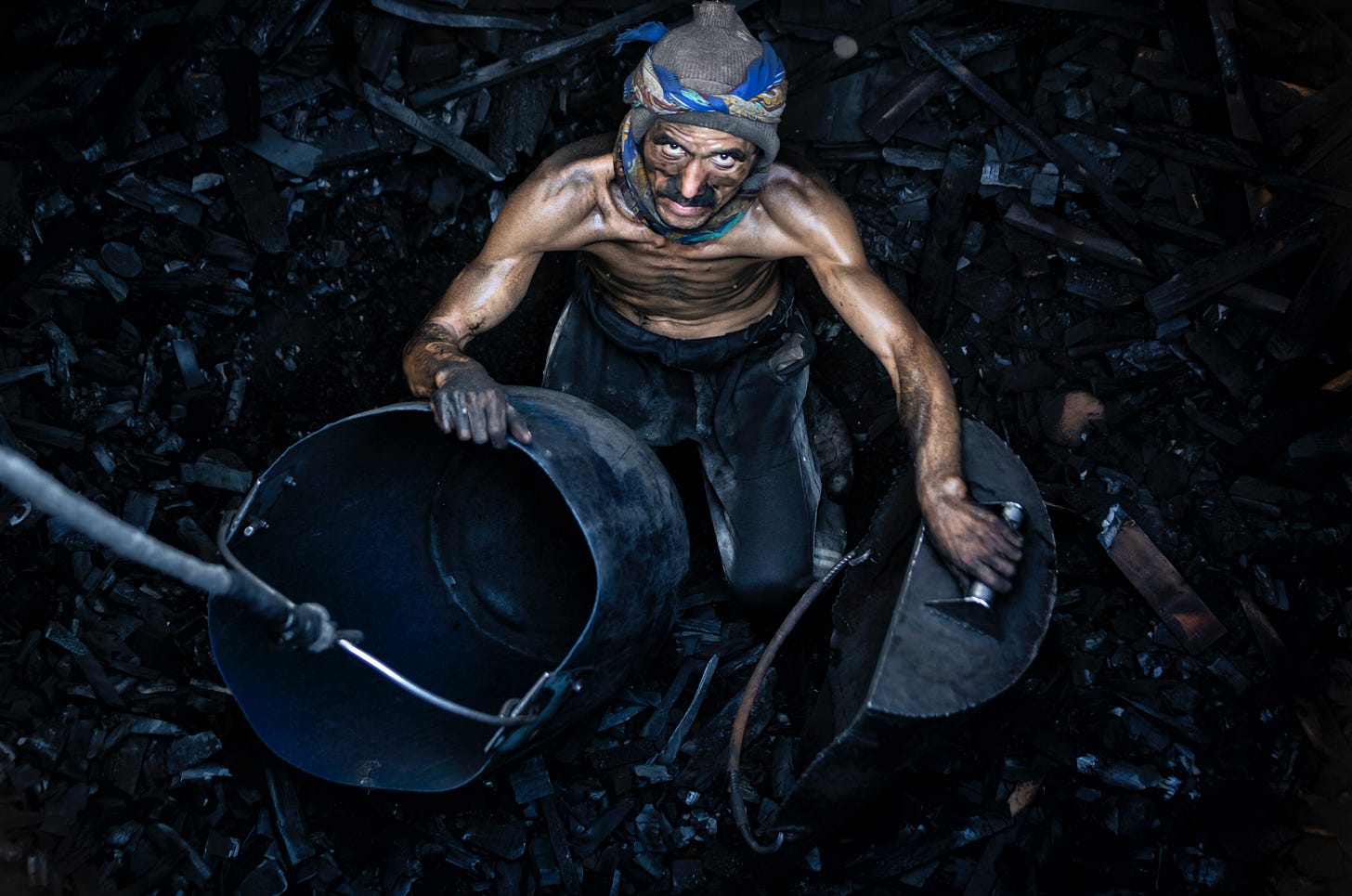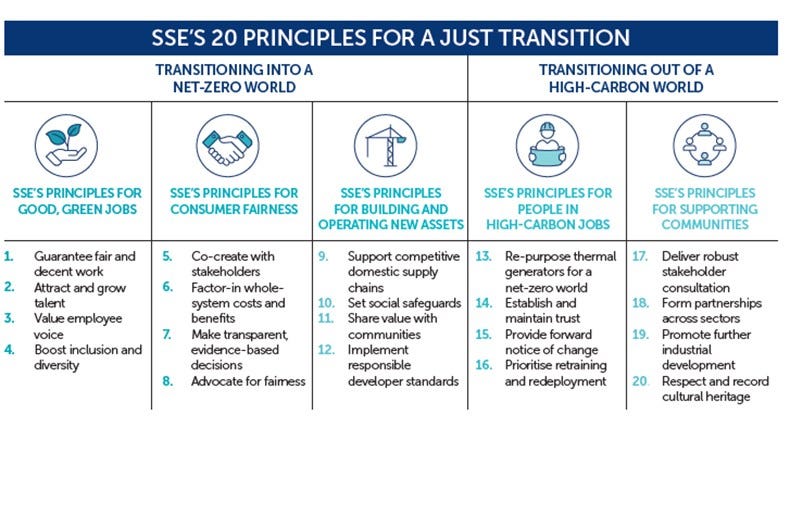Photo by Amir Arabshahi on Unsplash
Most of the people who understand the issue of climate change and the breaching of our planetary boundaries understand the need for a transition away from fossil fuels. The idea is that this will lead to a world with lower emissions and cleaner energy if that transition happens fast enough and around the world. We could mitigate much of the damage now projected from climate change and the breaching of those planetary boundaries.
But there's a little wrinkle in there that people often forget. What happens to all the people?
What happens to all the coal miners, and workers in the oil fields? No fossil fuels are going to be eliminated tomorrow, but if we do slowly and steadily move away from fossil fuels, how to deal with the people in those industries in a just and equitable manner is an important question.
Let's take the coal industry for example. I'm going to look at coal because coal is the industry that most likely would be on the global chopping block first. Coal is already being displaced by wind, solar, and other green energies in many markets and it's the dirtiest fossil fuel.
It's estimated that about 7 million people are employed in the global coal industry in one way or another so that's 7 million jobs that may be eliminated in the coming decades. That number certainly won't rise. So, what do you do with the 7 million people globally who work in the coal industry?
You can look at the issue from several perspectives. Take the corporate side which is summed up nicely in the recent paper The Chairperson's Guide to a Just Transition that was put together by Deloitte, Climate Governance Initiative, and the World Economic Forum.
You can find a different perspective in A Trade Union Guide a Practice for a Just Transition. Both of these papers came out at about the same time a year ago but of course, offer different perspectives on the issue.
If you are lazy, you can just look at this Graphic from SSE plc (formerly Scottish and Southern plc):
Source: SSE plc
Listen to all sides.
As with any important issue, it's important to understand all sides of the issue, and those I mentioned above are just two of them. To read only one without the other is doing a disservice to your understanding of the issue. The chairperson's guide to adjusting transition is more high-level and talks about company-level management level issues. The trade union’s guide gets right down to issues like who's going to pay for all this.
There are core principles both reports agree on, and you can see in other discussions of a just transition. These include:
Dialogue with all parties - All impacted parties must be around the table so that everyone's point of view is heard and those most adversely impacted by the closing down of an industry or plant have a real say. This dialogue needs to be thorough and acceptable to all parties. There will be a long runway for many of these transitions so these discussions should be happening long before a plant is shut down, the mine is closed, or the drilling stops. This dialogue includes the communities impacted. In our coal mine example, you are likely going to have towns that have been coal mining towns for generations. The shutting down of a mine can have catastrophic impacts on that community.
Adequate compensation – Transitioning away from high-carbon industries is going to adversely impact a lot of vulnerable people. In our coal industry example that's about 7 million. Some of those people are executives, some of those people are accountants, some of those people are lawyers, some of those people are coal miners, and some have other jobs that go into each mining company. In some cases, people have just started their careers and can transition into other work easily. But some may be only a few years from retirement and can’t do so. Some in the middle of a career may require more training and more help to move on to something else. The question of who's going to pay for that transition and how much they're going to pay needs to be discussed honestly and transparently.
Job training - Some folks in carbon-intensive industries will indeed be able to transition smoothly into the energy jobs of the future. Carbon capture and sequestration hasn’t gotten off to the best start and there are real questions about whether it can ever be economically viable. But for the sake of this argument let's say that it will be viable. If so, there are a lot of people in the oil and gas industries with expertise and knowledge of the kind of drilling that will be needed to sequester carbon dioxide deep into the ground. But for many people, the skills they've developed over years or decades won't translate to a new field, and they will need to be adequately trained to do something new.
Shared sacrifice - The purpose of moving away from carbon-intensive industries is so that humanity benefits in the long run. But in the short run, it is mainly the workers in the mines, in the oil fields, and in the gas fields that will bear the brunt of this transition. For these transitions to be seen as fair and just so that society sees them as worthwhile, the sacrifice should be shared by all parties. This includes investors, company executives, communities, and governments as well as workers.
A final plan with firm commitments - All parties need to agree on a final plan with firm commitments about job training, compensation, and community impact.
Transparency - All of these aspects of a transition should be undertaken transparently. For workers and communities to agree to these transitions and for societies to see them as just they must take place in the open in a transparent way and be codified in writing for all to see.
Who's done this right and who has not?
Germany has allocated about €40 billion over 10 years for just transition for its coal mines according to the trade union report. In contrast, Europe as a whole has only allocated about €17 billion for a Just Transition Fund. Spain, for example, which began its Just Transition plan in 2019, has received €869 million from the European Union Just Transition Fund thus far.
The report also shows that in some countries workers don't have much of a seat at the table at these discussions.
The issue of a just transition is especially important in Asia, where about 50% of energy use comes from coal. India and China of course are the largest users of coal in Asia, but Indonesia the Philippines, and Vietnam are also quite dependent on coal.
At COP26 in 2021, the South African government, in collaboration with several developed economies introduced the Just Energy Transition Partnerships (JETPs). This group dedicated $8.5 billion to help South Africa in its decarbonization efforts. Indonesia ($20 billion) and Vietnam ($15.5 billion) also received funding.
As these efforts grow in scope and scale, we will be able to see what is working and what is not. We can hopefully adjust, so that we can take care of the people with the most to lose from a transition, even a just one.



